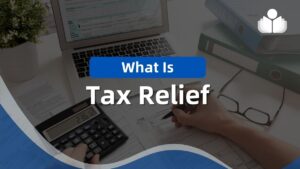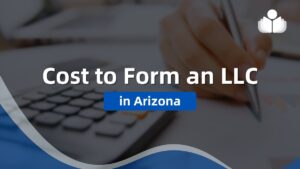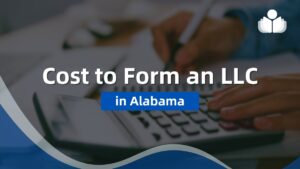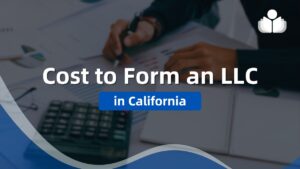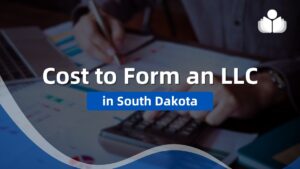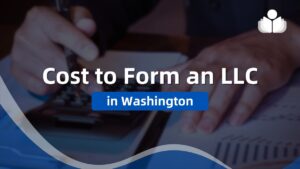Guidelines for nonprofit financial management are included in the book
Bookkeeping Basics: What Every Nonprofit Bookkeeper Needs to Know .
© Copyright
Carter McNamara, MBA, PhD, Authenticity Consulting, LLC.
This applies to nonprofits unless otherwise noted.
New nonprofit leaders and managers have to develop at least basic skills in financial management. Expecting others in the organization to manage finances is clearly asking for trouble. Basic skills in financial management start in the critical areas of cash management and bookkeeping, which should be done according to certain financial controls to ensure integrity in the bookkeeping process.
New leaders and managers should soon go on to learn how to generate financial statements (from bookkeeping journals) and analyze those statements to really understand the financial condition of the business. Financial analysis shows the “reality” of the situation of a business — seen as such, financial management is one of the most important practices in management. This topic will help you understand basic practices in financial management, and build the basic systems and practices needed in a healthy business.
Sections in This Topic Include
The following links are to sections included further below on this Web page.
Basics and Getting Started
- Basics of Financial Management
- Reviewing the Basics of Nonprofit Financial Management
- Use Fiscal Sponsorship?
- What Type of Bookkeeping System Should You Use?
- Your Board Treasurer and Board Finance Committee — Critical Resources to Help You Get Started
- Getting an Accountant, If Needed
- Buy a Software Package to Automate Your Financial Management?
- Getting a Bank and Banker
- Understanding and Setting Up Your Nonprofit Bookkeeping and Accounting
- Addressing Financial Controls and Risk Management
Activities in the Yearly Accounting Cycle
Planning and Cash Management
- Financial Planning
- Budgeting and Managing Budgets
- Managing Program Finances
- Managing Cash Flow
- Credit and Collections
- Budget Deviation Analysis
Financial Statements, Analysis and Reporting
Special Topics
- Cutting Costs
- Lease Versus Buy
- Assessments and Audits of Nonprofit Financial Management Practices
- General Resources (assistance, banking, software, accounting, etc.)
Also consider
Related Library Topics
BASICS AND GETTING STARTED
Basics of Financial Management
Reviewing the Basics of Nonprofit Financial Management
To manage your finances as effectively as possible, you should at least have an understanding of the basic accounting process. To get an overall sense for the recurring financial activities in the typical nonprofit, carefully read the following article.
Basic Overview of U.S. Nonprofit Financial Management
Other sites that you might benefit from are:
- Bookkeeping 101: A Beginning Tutorial
- Online Learning Center’s tutorial
- An Executive Director’s Guide to Financial Leadership
Use Fiscal Sponsorship?
In some cases, you might want to pursue finding a fiscal sponsor. For example, if you’re not sure you want to start a nonprofit, or if your nonprofit may not need to exist for long, then a fiscal sponsor may be useful for you. A fiscal sponsor might oversee your financial management activities until your organization is more developed or terminated. See Fiscal Sponsorship — Is it For You?
What Type of Bookkeeping System Should You Use?
Small organizations might use a single-entry bookkeeping system, although some might choose to use a double-entry.
What Type of Bookkeeping System Should You Use?
Also, see the cash-basis or accrual-basis in Basic Overview of U.S. Nonprofit Financial Management
Your Board Treasurer and Board Finance Committee — Critical Resources to Help You Get Started
An active board treasurer can be the most important resource in the long-term financial health of your nonprofit. As a new nonprofit organization, you must get accounting expertise somehow, if you don’t have strong skills in this area yourself. You (or, ideally your board chair) should get someone on your board with accounting skills to be your treasurer. See
Getting an Accountant, If Needed
You might choose to do the basic bookkeeping activities yourself. You should get an accountant initially to help you set up your bookkeeping system, generate financial statements and do some basic financial analysis.
- Getting and Using Accounting Services
- How to Hire an Accountant
- Nonprofit Bookkeeping Test
- What to Look for When Hiring an Accountant
Buy a Software Package to Automate Your Financial Management?
There are a number of very useful software packages that will help you automate bookkeeping, generation of financial statement and their analysis. See
Getting a Bank and Banker
You’ll need to start a checking account. Probably the best way to find a good bank is to ask for advice and references from other nonprofits, especially other nonprofits that are of the size and nature of yours. If you’re just starting out, you probably don’t have much money. You may be able to get buy with a non-interest-bearing checking out that has no, or minimal, fees. The following link may be useful
Getting and Using a Banker
Understanding and Setting Up Your Nonprofit Bookkeeping and
Accounting
Now that you have a sense for the overall, recurring activities in nonprofit financial management. Let’s take a closer look at what happens in nonprofit accounting. Accounting is identifying, organizing and reporting financial transactions. It’s useful to understand the basics of accounting before reading the next major section on financial planning — that planning requires some understanding of the accounting process. One of the biggest challenges is knowing how to enter each type of transaction in the journal and ledger. The following links are very useful for this challenge. Before reading them, do read Basics of Nonprofit Financial Management.
Quick Overviews of Bookkeeping / Accounting
Bookkeeping and accounting is all about identifying, organizing and reporting your financial transactions. Scan this information to further clarify your understanding of bookkeeping and accounting.
Critical Issues in Financial Accounting Regulation for Nonprofit Organizations
Setting Up Your Chart of Accounts
How to Design a Scalable Chart of Accounts
Deciding to Use Cash Basis or Accrual Basis for Accounting
- What is the difference between the cash basis and the accrual basis of accounting?
- What is petty cash?
Deciding Which Expenses Are Direct and Indirect (Overhead)
- Can a cost be both a direct cost and an indirect cost?
- Nonprofit Overhead Costs: Breaking the Vicious Cycle of Misleading Reporting, Unrealistic Expectations, and Pressure to Conform
Cost Analysis to Determine Costs of Activities
The following series gives you a well-structured overview of how to analyze the financial data, especially to associate costs with the activities in your organization. That information is extremely important if you ever need to cut costs.
- Nonprofit Cost Analysis: Introduction
- Nonprofit Cost Analysis – Step #1: Determine Purpose and Scope of Analysis
- Nonprofit Cost Analysis – Step #2: Gather Financial Data
- Nonprofit Cost Analysis – Step #3: Allocate Direct Costs
- Nonprofit Cost Analysis – Step #4: Allocate Indirect Costs
- Nonprofit Cost Analysis – Step #5: Check Your Data
- Nonprofit Cost Analysis – Step #6: Apply This Knowledge
Deciding How Much to Allocate to Fringe Benefits in Payroll Expenses
What is a fringe benefit rate? | AccountingCoach.com Q&A
Deciding How Much to Document as Depreciation
Addressing Financial Controls and Risk Management
There are certain practices that you should consistently follow to ensure that financial transactions are consistently recorded in an accurate fashion. These controls also help to minimize risk, including employee theft.
- 6 Strategies to Ensure the Security of Your NGO’s Financial Resources
- Minimizing Financial Fraud
- Avoid Common Accounting Missteps
Also consider
- Assessments and Audits of Nonprofit Financial Management Practices
- Insurance Information for Nonprofits
- Risk Management Information for Nonprofits
- Risk Management on Boards of Directors
ACTIVITIES IN YEARLY ACCOUNTING CYCLE: Budgeting (Financial
Forecasting) and Cash Management
Financial Planning
Financial planning works from the strategic and business plans to identify what financial resources are needed to obtain and develop the resources to achieve the goals in the two types of plans. Typically, financial planning results in very relevant and realistic budgets — budgets are addressed later on in this topic. So be sure to consider business planning for each of your products and services.
- Nonprofit Accounting Basics — Reporting and Operations
- Examples of Financial Plans for Not-for-Profit Organizations
- The Ultimate Guide to Setting SMART Financial Goals
- Strategic Planning
- Business Planning
Budgeting and Managing Budgets
A budget depicts what you expect to spend (expenses) and earn (revenue) over a time period . They are useful for projecting how much money you’ll need for a major initiative, for example, buying a facility, hiring a new employee, etc. They also help track whether you’re on plan or not. There are yearly (or annual or operating) budgets, cash budgets, capital budgets (for major assets, such as equipment, buildings, etc.) and proposal budgets (for fundraising), etc. The following links are about annual budgets.
Meaningful Budget Work by the Board
Managing Program Finances
Usually, there are two major types of costs to consider: indirect costs and direct costs. Indirect costs are what we sometimes call “administrative” or “overhead” costs, for example, costs to run the central facility. Direct costs are those that fund resources which directly produce services to clients, for example, supplies and materials for books provided to clients.
Usually, the lower your administrative costs, the more it looks like your resources are going directly to services to clients. In addition, you may have restricted grants (that is, grants that are dedicated for certain programs), which require you to report monies spent on overhead and directly on the program. Therefore, it’s wise to track carefully how much money each of your programs requires to operate and how much revenue it generates, as well. A major challenge is to analyze how much of the indirect costs are associated with each program.
Also see Basic Guidelines for Nonprofit Program Design and Marketing.
Managing Cash Flow
As a new or small nonprofit, your biggest challenge is likely to be managing your cash flow — probably the most important financial statement for a new business is the cash flow statement. The overall purpose of managing your cash flow is to make sure that you have enough cash to pay current bills. Nonprofits can manage cash flow by examining a cash flow statement and cash flow projection.
Basically, the cash flow statement includes total cash received minus total cash spent. Cash management looks primarily at actual cash transactions. (Note that nonprofits must file a financial statement called Cash Flow Statements or Statements of Cash Flow — this statement is not the same as a cash flow budget.)
Basics of Cash Flow Management — article specific to nonprofits
How to Make Cash Flow Projections
More Basics of Cash Management
Note that cash management activities, whether nonprofit or for-profits, are essentially the same.
Basics of Cash Management
- The Importance of Cash Management
- Techniques for Improving Cash Flow
- Cash Management Basics Resources
Preparing a Cash Flow Statement
Preparing Cash Flow Projections and Forecasts
- More information on doing cash flow forecast
- How to Make Cash Flow Projections
- Short-Term Cash Flow Projections
Managing Your Bank Account
For a new nonprofit, your check register very likely will be your primary means to record and track cash. Whether yours is a new nonprofit or an established nonprofit, you’ll need to know how to manage your bank account. See
Credit and Collections
Matters of credit and collections are similar between for-profit and nonprofit organizations, other than that nonprofits obviously grant free services much more than for-profit organizations. Consequently,
nonprofits are not nearly as likely to utilize credit and collections procedures.
Budget Deviation Analysis
You learned above that a budget depicts what you expect to spend (expenses) and earn (revenue) over a time period. Budget deviation analysis regularly compares what you expected, or planned, to earn and spend with what you actually spent and earned. The budget deviation analysis can help greatly when detecting how well you’re tracking your plans, how much to accurately budget in the future, where there may be upcoming problems in spending, etc. A budget deviation analysis report might include columns with titles:
|
Planned for Month |
Actual for Month |
Difference |
% Deviation |
ACTIVITIES IN YEARLY ACCOUNTING CYCLE: Financial Statements
and Analysis
Financial Statements
In order to know how your nonprofit is doing, you’ll do some ongoing financial planning and analysis. In this planning and analysis, you’ll likely use your bookkeeping information to produce various financial statements, including a cash flow statement, statement of activities and a statement of financial position.
- Financial Statements of Nonprofit Organizations
- Financial Statements of Nonprofits
- How to Understand a Nonprofit Financial Statement
Statement of Activities (Income Statements)
These statements include much money you’ve earned (your revenue) and subtracts how much you’ve spent (your expenses), resulting in the total of your unrestricted net assets. The statement of activities includes how much money you’ve earned (your revenue) and subtracts how much you’ve spent (your expenses), resulting in how much you’ve made money (your profits) or lost money (your deficits). Basically, the statement includes total sales minus total expenses. It presents the nature of your overall profit and loss over a period of time. Therefore, the Income Statement gives you a sense for how well the nonprofit is operating.
Statement of Financial Position (Balance Sheets)
Whereas the statement of activities depicts the overall status of your profits (or deficits) by looking at income and expenses over a period of time, the balance sheet depicts the overall status of your finances at a fixed point in time. It totals your all your assets and subtracts all your liabilities to compute your overall net worth (or net loss). This statement are referenced particularly when applying for funding.
- Statement of Financial Position
- Sample Balance Sheets
- Statement of Financial Position (Purpose, Key Numbers, Assets, Liabilities, & Stockholders’ equity)
- What is the difference between a balance sheet of a nonprofit organization and a for-profit business?
Financial Analysis (individual statements, ratios, break-even analysis, etc.)
Financial analysis can tell you a lot about how your nonprofit is doing. Without this analysis, you may end up staring at a bunch of numbers on budgets, cash flow projections and financial statements. You should set aside at least a few hours every month to do financial analysis. Analysis includes cash flow analysis and budget deviation analysis mentioned above. Analysis also includes balance sheet analysis and state of activities analysis. There are some techniques and tools to help in financial analysis, for example, profit analysis (yes, these can be used even in nonprofits), break-even analysis and ratios analysis that can substantially help to simplify and streamline financial analysis. How you carry out the analysis depends on the nature and needs of you and your business. The following links will help you get a sense for the “territory” of financial analysis.
General Information
- Financial Statement Example
- Beginner’s Guide to Financial Statements
- How Financial Sustainability is So Misunderstood
- 5 Strategies for Non-profits to Use to Get Rid of a Deficit
Financial Planning and Analysis — Ratios
There are a variety of ratios that can be used to help determine the current and future condition of a nonprofit. The following links provide explanation and procedures for using those ratios. The ratios are produced from numbers on the financial statements. Note that the usefulness of ratios often are from comparing ratios from different time periods in the same nonprofit or from standards for a type of nonprofit, eg, social services, associations, civic organizations, etc.
- Nonprofit FAQ’s questions about ratios (find them in this section)
- Financial Ratio Analysis (Definition)
- Financial Ratios (different types)
The following articles are in reference to for-profits, but the principles behind the ratios also apply to nonprofit organizations.
Overview of major types of ratios and how they’re computed
Financial Planning and Analysis — Break-Even Analysis
The break-even analysis uses information from the statement of activities and cash flow statements to compute how much sales or revenue much be accomplished in order to pay for all of your fixed and variable expenses. Fixed expenses are expenses that you’d have regardless of the level of sales of products or services (eg, sales, rent, insurance, maintenance, etc.). Variable expenses are incurred according to the level of sales of products or services (eg, sales commissions, sales tax, freight to ship products, etc.). Break-even analysis can help you when deciding how much to charge for a service, how much to ask for from donors, etc.
Financial Reporting
The types and frequency of reports depend on the nature of the nonprofit and its situation. Banks might want reports to verify financial strength to pay back loans. Foundations, individuals, or other donors may want reports to verify that donations are being spent as expected by the foundation or donor. The Internal Revenue Service will want certain reports when filing yearly tax forms.
Overview
Basics of Nonprofit Financial Management
Annual Reports
- Tips for Creating a Good Annual Report
- Tips for Reading an Annual Report
- The Annual Reports Library
- How to Write a Nonprofit Annual Report
- What a Great Idea! – The Nonprofit Annual Report
General
- Nonprofit Resource Center
- Have You: Met Your Financial Reporting Obligations?
- (also see “General Information” in Nonprofit Taxation)
SPECIAL TOPICS
Cost Cutting
- Nonprofit Survival Tips
- Cost Cutting (these are suggestions for for-profits, but most apply to nonprofits, too)
Also consider
Organizational Sustainability
Lease Versus Buy
Assessments and Audits of Nonprofit Financial Management Practices
Various Assessments and Indicators
- Financial Indicators
- Minnesota Council of Nonprofits “Principles and Practices”, section about finances
- Seven characteristics of financially healthy nonprofits
- Evaluating Your Nonprofit Financial Management
Audits
- Nonprofit Audit Checklist
- Nonprofit Audit Guide
- Does your nonprofit need to have an independent audit?
GENERAL RESOURCES
Sources of Online Assistance and Information
Software to Help Manage Your Finances
Getting and Using Banking Services
- Banking Rules for Non-Profit Organizations
- Closing a Bank Account Without Going to the Bank
- How to Open a Bank Account for a Non-Profit Association
Getting and Using Accounting Services
- How to Hire Accounting Services for Your Small Business
- Business Contracts (this will be useful if you sign any contracts with the accountant)
- Facing Changing Paradigms — A Nonprofit Accountant in the Catbird Seat
You should carefully consider whether you should hire an outside accountant, or hire your own employee. The IRS pays increasing attention to the hiring of independent contractors.
Potential Issues in Hiring Consultants (general information and IRS-related issues)
Have a Treasurer to Help You?
Fiscal Sponsorship — To Help Get Your Finances Started …
- Fiscal Sponsorship (Wikipedia)
- How Fiscal Sponsorship Nurtures Nonprofits
- Fiscal Sponsorship: A Balanced Overview
- More Than the Money: Fiscal Sponsorship’s Unrealized Potential
- Fiscal Sponsorship is Maturing as a Field
Miscellaneous Other Resources
Major Sites of Online Information
- Financial resources for nonprofit financial management
- Nonprofit Resource Center
- Nonprofits Assistance Fund – Various tools for financial management
- Free, Online, Self-Paced Program to Completely Build/Strengthen Your Nonprofit
- Basic Guide to Nonprofit Program Design and Marketing
- Various Types of Resources
- Various Major Sites of Online Information
Also consider
Supersites
Learn More in the Library’s Blogs Related to Nonprofit Financial Management
In addition to the articles on this current page, also see the following blogs that have posts related to Nonprofit Financial Management. Scan down the blog’s page to see various posts. Also see the section “Recent Blog Posts” in the sidebar of the blog or click on “next” near the bottom of a post in the blog. The blog also links to numerous free related resources.
- Library’s Nonprofit Capacity Building Blog
- Library’s Social Enterprise Blog
- Library’s Strategic Planning Blog
For the Category of Financial Management (Nonprofit):
To round out your knowledge of this Library topic, you may want to review some related topics, available from the link below. Each of the related topics includes free, online resources.
Also, scan the Recommended Books listed below. They have been selected for their relevance and highly practical nature.
 Sections of this topic
Sections of this topic


